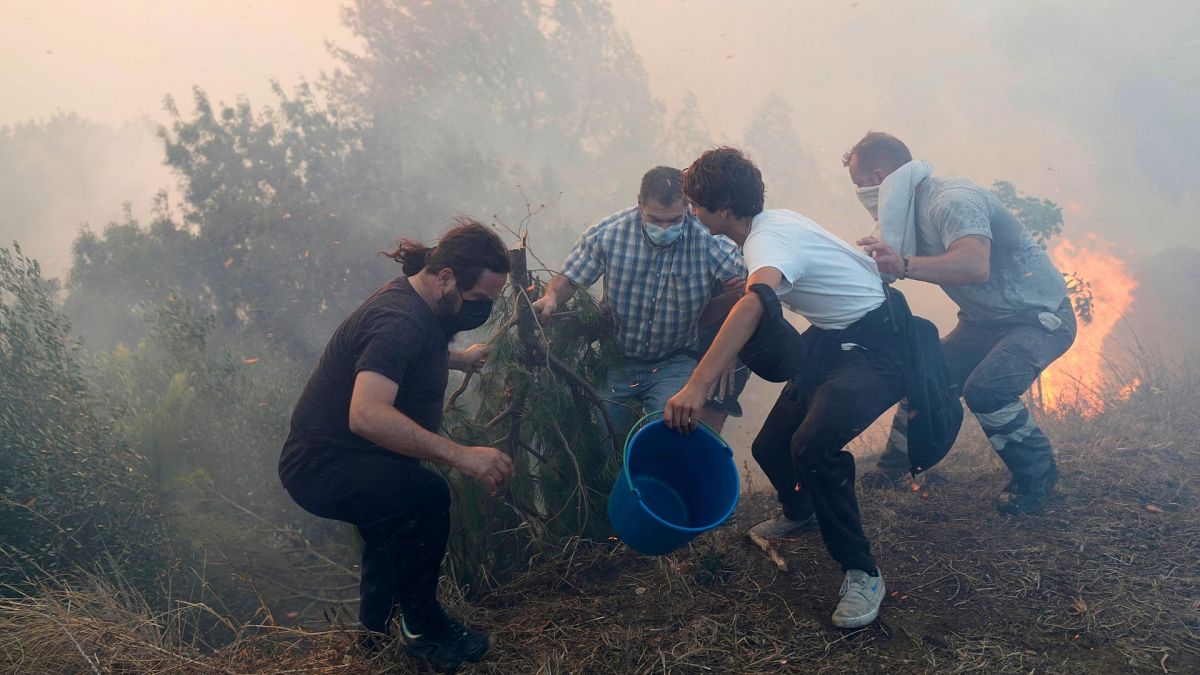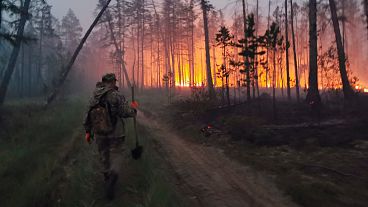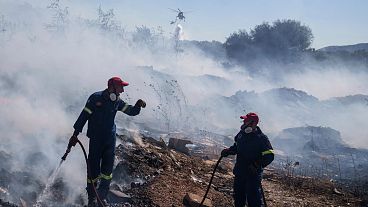The 2024 wildfire season has already begun in Europe as the season starts earlier and lasts longer.
Climate change is increasing the frequency and intensity of the world’s most extreme wildfires, a new study shows.
Analysing 21 years of NASA satellite data, researchers found that severe burns more than doubled in frequency between 2003 and 2023. The intensity of these fires also increased 2.3-fold, with the six most extreme years happening from 2017 onwards.
In Europe, Portugal is among the countries worst affected in recent years.
Alongside the Amazon, Australia, Canada, Chile, Indonesia, Siberia and the western US, according to the study published in the journal Nature Ecology & Evolution.
These ‘energetically extreme’ wildfires - measured by the energy released in a day - often destroy ecosystems, impact the health and livelihoods of local people, and cause billions of euros of damage. They also emit vast quantities of smoke and greenhouse gases, which in turn worsen global warming - one of the key drivers of wildfires.
Temperate conifer forests face rising wildfire risk
The researchers found that extreme wildfires were disproportionately concentrated in key habitats around the world.
In particular, the frequency of extreme events has increased by more than 11 times in temperate conifer forests, such as those found in the western US, in the last two decades. In boreal forests and taiga - found in North America and Russia - they have risen by more than seven times.
Low moisture in the twigs, leaves, grasses and other forest debris that fuels wildfires has sparked an “exponential increase” in the area burned in recent decades.
This is a result of human-caused climate change, and drove more than half of the increase in forest fire extent in the western US between 1979 and 2015, according to the study.
Europe’s wildfires are ramping up as summer sets in
Greece is bracing for a long wildfire season after unprecedented heat sparked an early start to blazes this month.
A fire in mid-June closed traffic along a main highway in Athens, requiring 70 firefighters and 13 planes and helicopters to keep it under control in strong winds.
The country doubled its firefighter capacity in May in anticipation of a record season.
The EU has also boosted efforts to reduce wildfire damage in Europe following a devastating summer in 2023. A team of 556 firefighters from 12 countries will be strategically placed across key locations, including in high risk areas like France, Greece, Portugal and Spain.
Why are wildfires so dangerous?
Besides their immediate threat to life, wildfires release fine particulate matter (PM2.5) that can cause and exacerbate lasting health conditions like lung and heart disease.
This can lead to premature death, sometimes months after the actual fire. This was tragically illustrated this week after Hawaii authorities announced the death of a 68-year-old woman from injuries and health issues almost a year after she was caught up in the deadliest US wildfire in over a century last August.
With climate change driving up temperatures and creating drier conditions, fire seasons are starting earlier and finishing later.
In turn, fires release planet-warming gases into the atmosphere, creating a dangerous feedback loop.















